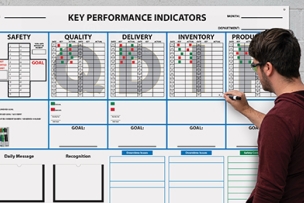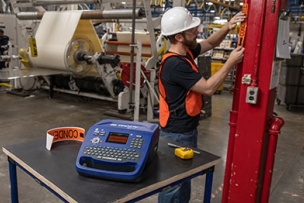The emergence of digital two-way radio technology for businesses has had a big impact on the choices companies make, as the differences between digital and more traditional analog devices can have extensive implications for users, including differences in range, clarity and general functionality.
Read more: Why You Need to Perform Workplace Hazard Assessments
Moving From Analog To Digital Walkie Talkies
Analog radios have been the go-to option for companies looking for reliable and durable voice communications since the 1930s. These devices provide users with an easy-to-use communication system, but they do have limitations when it comes to ensuring clear voice communications or strong reception.
Analog radios tend to highlight all the noises that the microphone picks up, which can make it hard for voices to be understood clearly in noisy environments. Also, radio interference produces static that interrupts signals between analog devices, and voices can become less comprehensible when the devices are used at the outer limits of coverage areas. Another limitation of these radios is that they have limited channel functionality compared with newer digital options.
Enter digital radios. While analog radios were once the longtime standard, digital two-way radios are now becoming more commonplace. These devices offer many advantages over their analog forebears, such as improved voice quality, increased signal coverage, longer battery life and better radio capacity.
And whereas two-way analog radios typically only allow for one two-way conversation at a time per channel, limiting a team’s ability to collaborate and conduct private conversations, digital radios expand the capabilities of voice communications, allowing for one-to-one communication and push-to-talk opportunities that improve safety training.
Motorola Solutions lists four key reasons why digital radios outperform their analog counterparts.
- Better voice quality: Automatic error correction capabilities maintain voice clarity, even with background noise or a corrupted signal. Speech is digitally encoded, which means advanced algorithms can deliver clear voice in extreme conditions.
- Greater capacity: Bandwidth far outreaches what analog can offer. It’s so efficient, it allows you to double the capacity of your existing 12.5kHz channel which can lower your licensing costs.
- Stronger coverage: Digital performs better even at the far edges of coverage. Built-in error correction helps eliminate the static, background noise and voice distortion that can occur with analog radios as you reach the limits of coverage.
- Longer battery life: While battery life is a challenge for all mobile devices, digital technology is much more efficient. Digital radios provide up to 40 percent longer battery life allowing users to go an entire day without needing a battery recharge.
Read more: Eye Protection Guide: Picking the Right Safety Glasses and Goggles
Benefits of Digital Two-Way Radio Systems
In addition to these characteristics, there are other features that make digital an attractive option.
Depending on the radio model you choose, features include preprogrammed text messages, channel voice announcement, one-touch private calling, and “all call”—a powerful feature that allows a user to make an announcement to all team radios at once even if other users are on different channels. This feature enhances team security because in an emergency it allows all radio users to be alerted of an incident with the push of one button.
There are other benefits of switching to digital radios. The investment made in the product can potentially yield greater efficiency for your organization. They may also promote greater safety by reducing the possibility of miscommunications that can come with weak coverage and crossed channels—common problems with analog radios. More safety means fewer costly workplace injuries.
Motorola Solutions is one of the largest manufacturers of two-way radios and a major brand name in the space. The company produced some of the first handheld phones and also developed the first walkie-talkies.
Current Motorola Solutions products include models such as the SL300, the CP100d, the CP200d and the EVX-S24. These two-way radios are used by businesses engaged in manufacturing, warehousing, construction and commercial activities.
Ultimately, whether your business adopts digital technology depends on its unique needs and requirements. If your business is faring well with analog devices, there’s likely no need to upgrade your entire system to digital immediately.
As digital technologies become more commonplace and used by a greater number of organizations, the sophistication of the technology is likely to improve, and costs should come down with greater adoption. Devices may also be customized to perform optimally in an organization and be more useful to your organization’s needs.
However, moving to digital could be seen as a smart long-term investment, especially for companies that want to get an edge from high-end functionality.
Are you still using analog radio technology, or have you made the switch to digital? Which do you prefer? Share your insights in the comments below.





Talk to Us!
Noticed that on this page: https://www.mscdirect.com/betterMRO/safety/digital-vs-analog-two-way-rad...
You have a few broken links such as this one in the right hand break out column:
https://www.mscdirect.com/product/details/29989886
25Thank you for pointing that out James. We'll get it fixed.
23Leave a reply
Your email address will not be published. Required fields are marked *